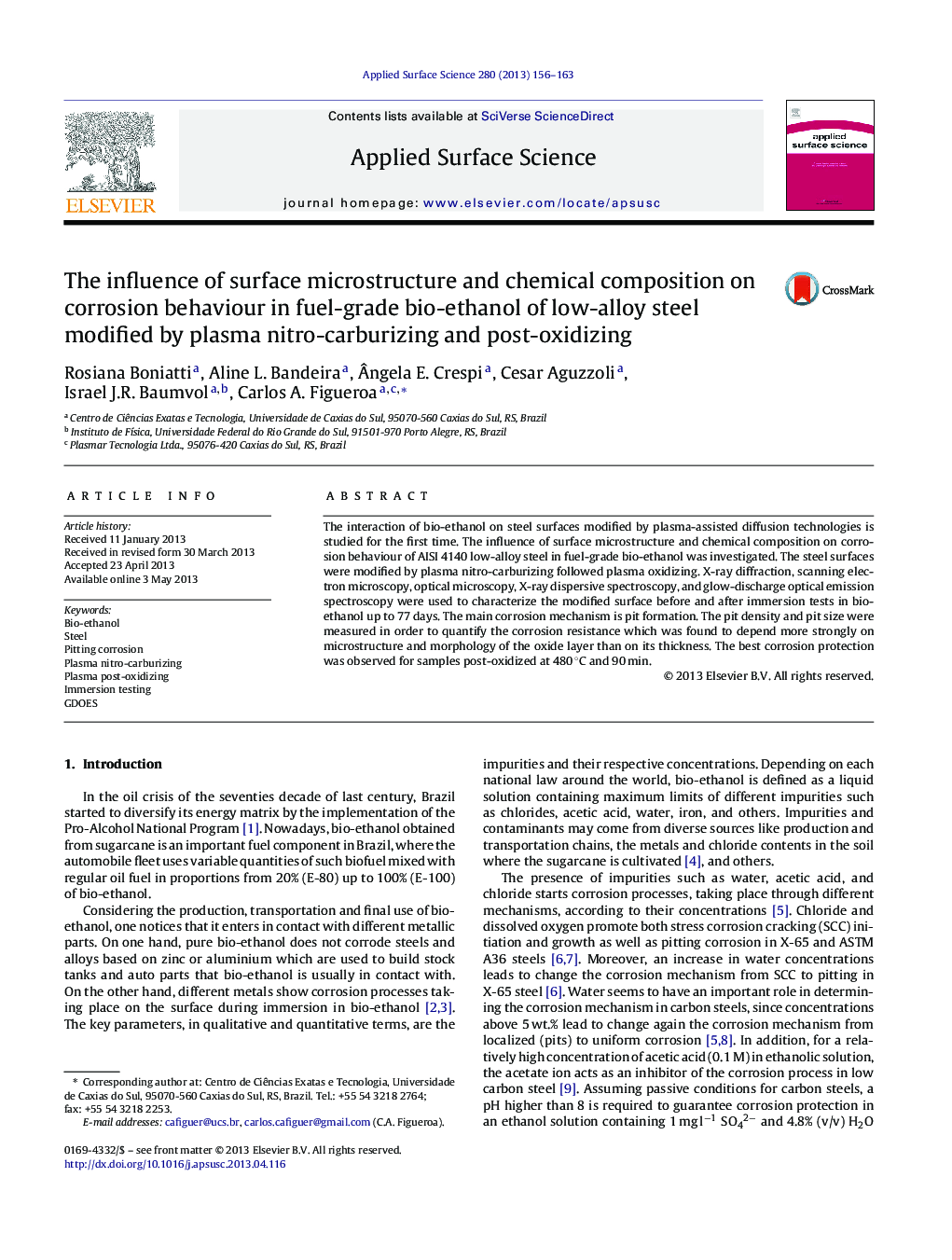| Article ID | Journal | Published Year | Pages | File Type |
|---|---|---|---|---|
| 5352978 | Applied Surface Science | 2013 | 8 Pages |
Abstract
The interaction of bio-ethanol on steel surfaces modified by plasma-assisted diffusion technologies is studied for the first time. The influence of surface microstructure and chemical composition on corrosion behaviour of AISI 4140 low-alloy steel in fuel-grade bio-ethanol was investigated. The steel surfaces were modified by plasma nitro-carburizing followed plasma oxidizing. X-ray diffraction, scanning electron microscopy, optical microscopy, X-ray dispersive spectroscopy, and glow-discharge optical emission spectroscopy were used to characterize the modified surface before and after immersion tests in bio-ethanol up to 77 days. The main corrosion mechanism is pit formation. The pit density and pit size were measured in order to quantify the corrosion resistance which was found to depend more strongly on microstructure and morphology of the oxide layer than on its thickness. The best corrosion protection was observed for samples post-oxidized at 480 °C and 90 min.
Related Topics
Physical Sciences and Engineering
Chemistry
Physical and Theoretical Chemistry
Authors
Rosiana Boniatti, Aline L. Bandeira, Ãngela E. Crespi, Cesar Aguzzoli, Israel J.R. Baumvol, Carlos A. Figueroa,
